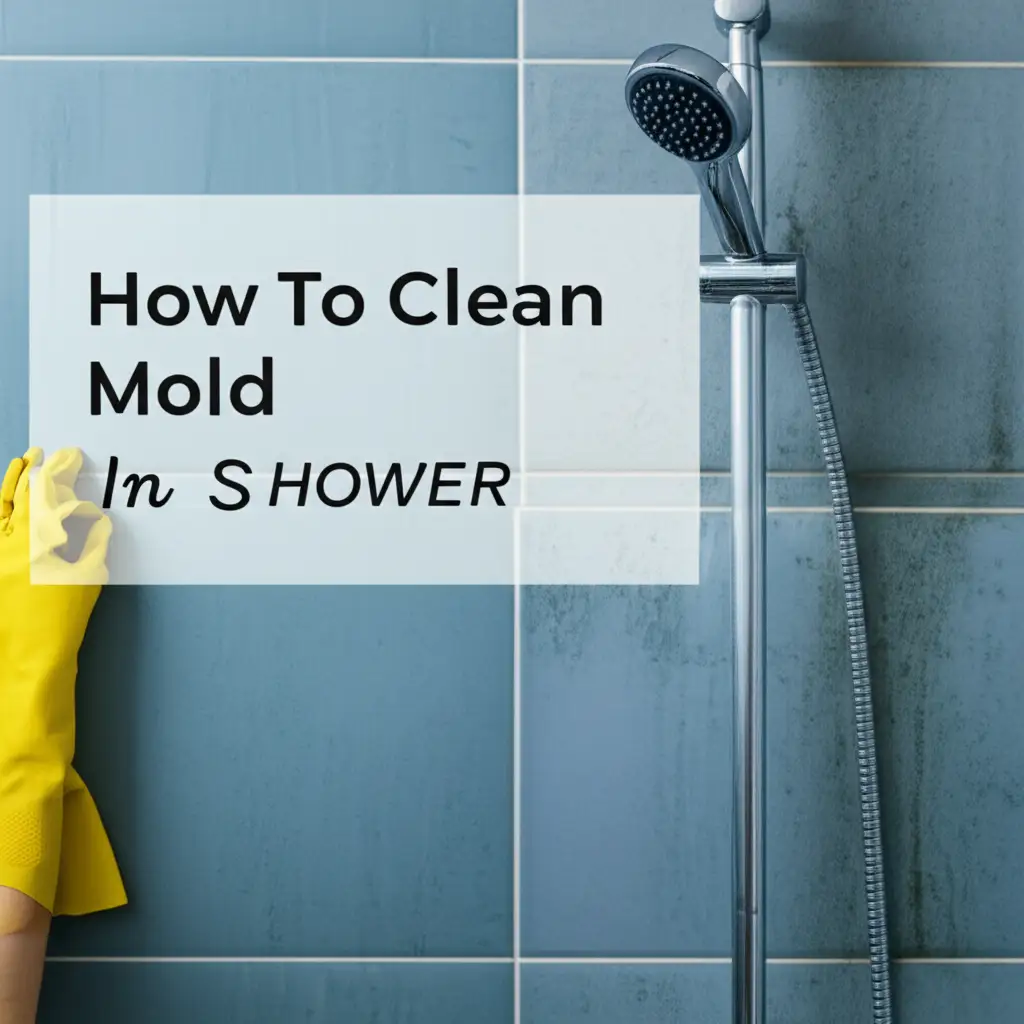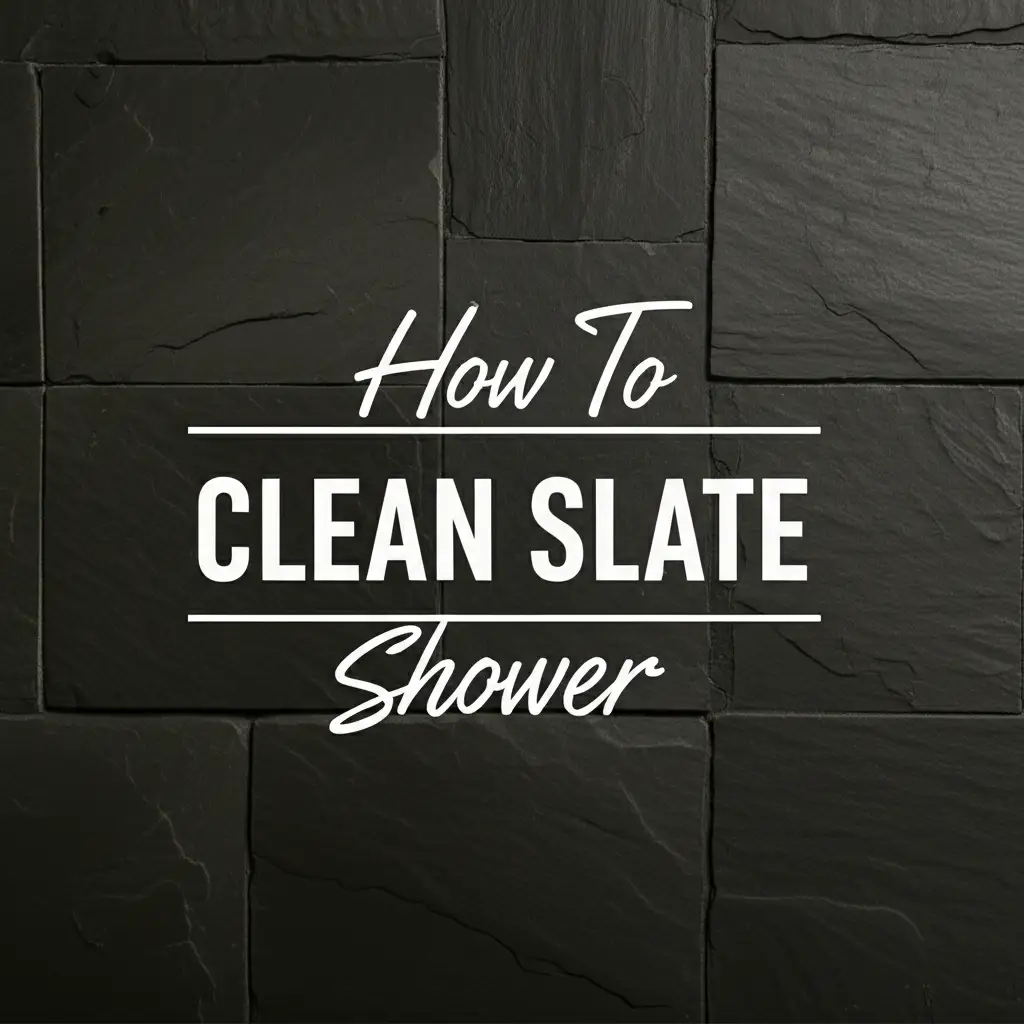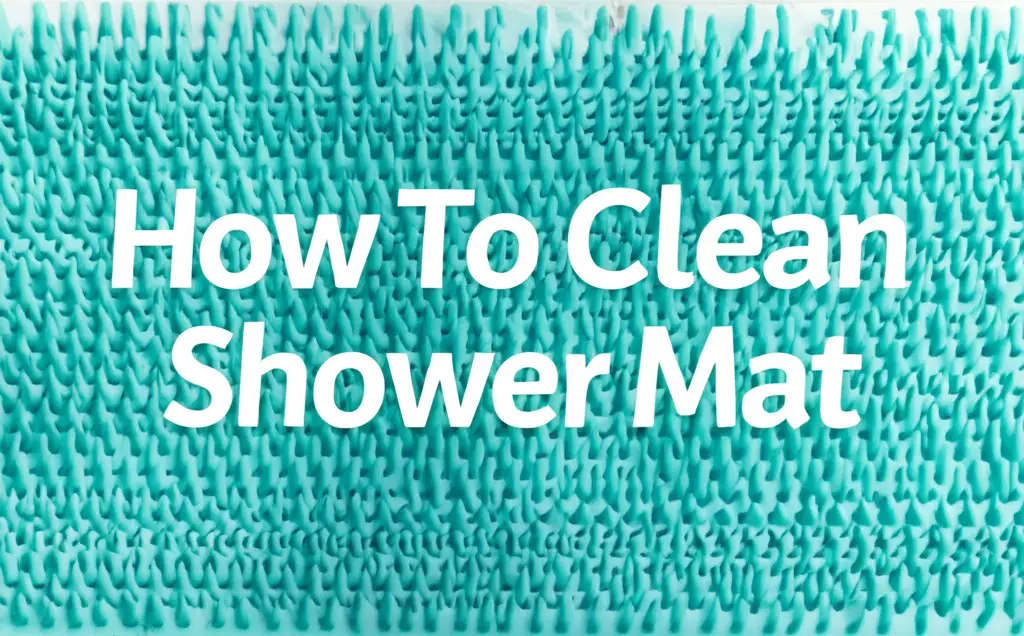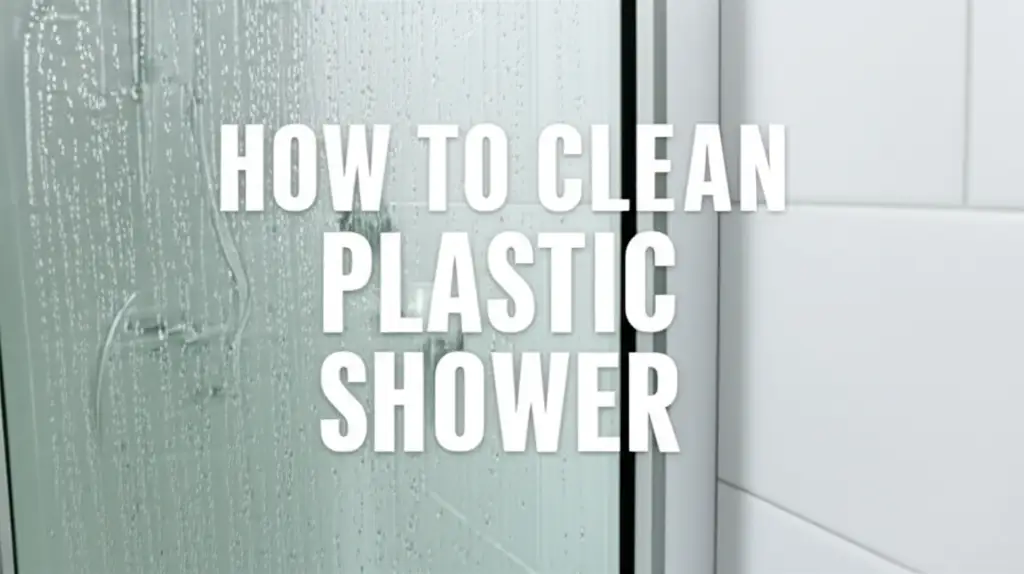· Home Cleaning · 12 min read
How To Clean Mold In Shower

Clean Shower Mold: Your Guide to a Spotless Bathroom
Stepping into a shower often brings thoughts of cleanliness and refreshment. However, finding unsightly mold can quickly change that perception. Mold in the shower is a common problem for many homeowners. It thrives in damp, warm environments, making your shower a perfect breeding ground. You might notice black, pink, or green spots appearing on grout lines, caulk, or shower walls. These fuzzy patches are not just unpleasant to look at; they can also pose potential health risks and damage your bathroom surfaces over time. Learning how to clean mold in shower areas is crucial for a healthy and inviting bathroom space. This guide provides effective methods and practical tips to tackle shower mold, ensuring your bathroom remains sparkling clean and mold-free.
Takeaway
Cleaning mold in your shower can restore its fresh appearance and maintain a healthy environment. Here are the key steps:
- Prioritize safety by wearing gloves, masks, and ensuring good ventilation.
- Use natural cleaners like vinegar or baking soda for light mold.
- Apply stronger solutions like bleach or hydrogen peroxide for stubborn mold.
- Clean specific areas like grout, caulk, and shower walls with appropriate methods.
- Implement daily habits to prevent mold regrowth, such as drying surfaces and improving ventilation.
Cleaning mold in your shower involves using household cleaners like white vinegar, baking soda, or bleach, along with proper scrubbing tools. Ensure good ventilation and wear protective gear for your safety. Always address the underlying moisture issues to prevent mold from returning.
Understanding Shower Mold: Why It Appears and How It Grows
Mold is a type of fungus. It grows from spores that are naturally present in the air. When these spores land on a damp surface, they can begin to grow. Your shower offers ideal conditions for mold growth.
High humidity levels and poor ventilation create a constantly moist environment. Residual water left on tiles, grout, and caulk provides the necessary moisture. Soap scum and skin cells also offer a food source for mold. These factors combine to make the shower a prime location for mold to flourish.
Different types of mold can appear in your shower. Black mold, often Stachybotrys chartarum, is a common concern. You might also see pink mold, which is typically a bacteria called Serratia marcescens. Other molds can appear green, brown, or white. All these growths indicate a moisture problem that needs attention.
Understanding these conditions helps you target the problem effectively. You must remove the existing mold. You also need to control the moisture. This dual approach ensures your shower stays clean longer.
Safety First: Essential Precautions for Mold Removal
Cleaning mold requires careful attention to safety. Mold spores can irritate your respiratory system. They can also cause allergic reactions in some people. Taking proper precautions protects your health during the cleaning process.
First, ensure good ventilation in your bathroom. Open windows and turn on the exhaust fan. This helps to clear the air and reduce exposure to mold spores and cleaning fumes. You should never clean mold in an enclosed space without fresh air. Proper airflow is essential for your safety.
Wear protective gear to avoid direct contact with mold and cleaning solutions. Put on rubber gloves to protect your hands from chemicals. An N95 respirator mask is important to prevent inhaling mold spores. Safety glasses or goggles will shield your eyes from splashes and airborne particles. Do not skip these steps.
Clear the area of any personal items. Remove bath mats, towels, and toiletries from the shower. This prevents them from getting contaminated or damaged by cleaning products. You want a clear workspace. Prepare your cleaning solutions and tools before you begin.
Natural Ways to Clean Mold in Your Shower
Many people prefer using natural products to clean their homes. These options are often safer for your family and pets. They also produce fewer harsh fumes. Natural cleaners can be very effective against light to moderate mold.
Vinegar: Your Eco-Friendly Mold Fighter
White vinegar is a powerful natural cleaner. It contains acetic acid, which can kill about 82% of mold species. Vinegar is non-toxic and biodegradable. You can use it safely on most shower surfaces.
To use vinegar, fill a spray bottle with undiluted white vinegar. Spray the moldy areas thoroughly. Let the vinegar sit for at least an hour. This allows it to penetrate and break down the mold. After an hour, scrub the area with a brush or sponge. Rinse well with water. For persistent mold, you can repeat the process. You can learn more about how to use how to clean mold with vinegar effectively. Vinegar is also excellent for general shower cleaning; discover more tips on how to clean shower with vinegar.
Baking Soda: A Gentle Abrasive for Mold Stains
Baking soda, or sodium bicarbonate, is another effective natural cleaner. It is a mild abrasive, which helps scrub away mold stains. Baking soda also deodorizes, removing that musty mold smell. It is safe for most surfaces, including delicate ones.
Create a paste by mixing baking soda with a small amount of water. You want a thick consistency. Apply this paste directly to the moldy areas. Let it sit for 10-15 minutes. Then, scrub the paste into the mold with a brush. The abrasive action helps lift the stains. Rinse the area thoroughly with water. For an extra boost, you can combine baking soda with vinegar. Find more comprehensive tips on how to clean shower with baking soda.
Tackling Tough Shower Mold with Stronger Cleaners
Sometimes, natural solutions are not enough for severe mold infestations. Very stubborn mold requires stronger cleaning agents. These products can penetrate deep into porous surfaces. They effectively kill mold spores and remove tough stains. Always use these cleaners with extreme caution.
Bleach: For Stubborn Mold Stains
Bleach, or sodium hypochlorite, is a powerful disinfectant and stain remover. It kills mold and lightens dark mold stains. Use bleach only in well-ventilated areas. It should never be mixed with other cleaners, especially ammonia or vinegar, as this creates dangerous fumes.
To use bleach, mix one part bleach with 10 parts water in a spray bottle. Spray the solution onto the moldy areas. Let it sit for 10-15 minutes. Do not let it dry on the surface. Scrub the area with a stiff brush. Rinse thoroughly with clean water. Ensure no bleach residue remains. For detailed instructions on using bleach safely for mold, consult our guide on how to clean mold with bleach. You can also find more general shower cleaning advice using bleach in our article on how to clean shower with bleach.
Hydrogen Peroxide: A Safer Alternative to Bleach
Hydrogen peroxide is a good alternative to bleach. It is less corrosive than bleach. It also breaks down into water and oxygen, leaving no toxic residue. Hydrogen peroxide is effective at killing mold. It also helps to whiten surfaces.
Use a 3% hydrogen peroxide solution. Pour it into a spray bottle. Spray the affected areas until they are completely saturated. Let the solution sit for at least 10 minutes. This allows it to kill the mold. Scrub the area vigorously with a brush or sponge. Rinse with clean water. Hydrogen peroxide is generally safe for most shower surfaces. Test a small, inconspicuous area first if you are unsure.
Step-by-Step Guide to Cleaning Different Shower Surfaces
Mold often appears on specific shower surfaces. Each material might require a slightly different approach. Understanding these differences helps you clean more effectively. You can get rid of mold without damaging your shower.
Cleaning Mold from Grout Lines
Grout lines are very porous. They absorb moisture easily. This makes them a prime spot for mold growth. Dark, stubborn stains often appear here. Cleaning grout requires a bit of scrubbing power.
Start by applying your chosen cleaning solution to the grout lines. You can use vinegar, baking soda paste, or a bleach solution. Let the cleaner sit for 15-30 minutes. This gives it time to penetrate the mold. Use a stiff-bristled brush or an old toothbrush to scrub the grout lines. The small bristles can reach into the crevices. Scrub vigorously until the mold disappears. Rinse the entire area thoroughly with water. For more in-depth techniques, read our guide on how to clean grout in shower.
Addressing Mold on Shower Caulk and Silicone
Caulk and silicone seals are flexible materials. They are often found around the edges of showers, tubs, and sinks. Mold frequently grows on these surfaces. It can look like black spots embedded within the caulk. Cleaning these areas needs care.
Apply your cleaning solution to the moldy caulk or silicone. Let it sit for a period. Use a soft brush or cloth to gently scrub the surface. Avoid harsh scrubbing that could damage the seal. If mold has grown deep into the caulk, it may be impossible to remove completely. In such cases, you might need to remove the old caulk and apply new caulk. Our article on how to clean mold off silicone offers specific advice. For general caulk maintenance, learn how to clean caulking in shower.
Cleaning Shower Walls and Doors
Shower walls can be made of tile, fiberglass, acrylic, or plastic. Shower doors are usually glass or plastic. Mold can appear on any of these surfaces. The cleaning method depends on the material.
For tile and fiberglass walls, spray your chosen cleaner directly onto the mold. Let it sit for 10-15 minutes. Use a non-abrasive sponge or cloth to wipe away the mold. For plastic shower walls, use gentle cleaners to avoid scratching. Our guide on how to clean plastic shower walls provides specific recommendations. For glass shower doors, a vinegar solution often works well. Spray the door, let it sit, then wipe it clean. For detailed instructions on keeping your glass doors spotless, check out [how to clean shower doors with vinegar](https://beacleaner.com/how to-clean-shower-doors-with-vinegar). Always rinse thoroughly after cleaning any surface.
Preventing Future Shower Mold Growth
Cleaning mold is a good start. However, preventing its return is just as important. Mold loves moisture. Controlling moisture is key to keeping your shower mold-free. Simple daily habits can make a big difference.
Improve ventilation in your bathroom. Turn on the exhaust fan during and after every shower. Keep it running for at least 30 minutes after you finish. This helps remove humid air. If you do not have an exhaust fan, open a window or door. Air circulation is vital to dry out the space.
Wipe down shower surfaces after each use. Use a squeegee on glass doors and tiled walls. A towel can dry the faucet, showerhead, and other fixtures. This removes excess water. Removing standing water deprives mold of the moisture it needs to grow. It is a quick and effective habit.
Address any leaks promptly. Even small drips can provide continuous moisture for mold. Check faucets, showerheads, and pipes regularly. Repair them as soon as you notice a leak. Also, ensure your caulk and grout are in good condition. Re-caulk or re-grout if you see cracks or deterioration.
Regular cleaning is your best defense. Clean your shower at least once a week. Use a daily shower spray. These sprays help prevent soap scum and mildew buildup. A clean and dry shower is less likely to develop mold problems.
When to Seek Professional Mold Remediation
Most shower mold can be managed with DIY cleaning. However, there are times when you should call in a professional. Ignoring severe mold can lead to bigger problems. Knowing when to get help protects your home and your health.
Consider professional help if the mold covers a large area. If mold spans more than 10 square feet, it indicates a significant infestation. This suggests a deeper problem, possibly behind walls or under flooring. Large-scale mold removal requires specialized equipment and expertise. Professionals have the tools to safely contain and remove extensive mold.
Call a professional if mold reappears quickly after cleaning. This means the root cause of moisture has not been resolved. It could indicate hidden mold growth. Hidden mold can be difficult to locate and treat on your own. Experts can identify the source of the moisture. They can also remove mold from inaccessible areas.
Seek professional assistance if you experience health issues. If mold exposure causes persistent respiratory problems, allergies, or other symptoms, do not delay. Professionals ensure the mold is fully removed and the air is safe. They can advise on proper ventilation and future prevention. Your health is a priority.
Frequently Asked Questions
Is shower mold dangerous to my health?
Shower mold can pose health risks. It can cause allergic reactions, respiratory problems, and skin irritation in sensitive individuals. Black mold, like Stachybotrys chartarum, can produce mycotoxins, which may be more harmful. Prompt removal is important for a healthy living environment.
How often should I clean my shower to prevent mold?
Clean your shower thoroughly at least once a week to prevent mold. For best results, quickly wipe down surfaces after each use. This removes excess moisture. Regular cleaning prevents mold spores from taking hold and growing. Consistent effort keeps mold away.
Can I mix bleach and vinegar to clean mold?
No, never mix bleach and vinegar. This combination creates highly toxic chlorine gas. Inhaling chlorine gas can cause severe respiratory issues and is very dangerous. Always use bleach and vinegar separately. Ensure the area is well-ventilated when using either product.
Will mold damage my shower surfaces permanently?
Mold can cause damage to shower surfaces over time. It can stain grout and caulk. It can also degrade silicone seals, leading to leaks. Porous materials like grout can become deeply discolored. Early detection and cleaning prevent long-term damage and costly repairs.
What kind of mold typically grows in showers?
The most common type of mold in showers is black mold, often Cladosporium or Aspergillus. Pink mold, which is actually a bacterium called Serratia marcescens, also frequently appears. Green, white, or brown molds can also be found. All thrive in high-moisture environments.
Conclusion
Cleaning mold in your shower is an essential part of home maintenance. It ensures a healthy, clean, and inviting bathroom space. We explored various methods, from natural solutions like vinegar and baking soda to stronger cleaners like bleach. Each approach offers effective ways to tackle different levels of mold infestation. Remember to always prioritize your safety by wearing protective gear and ensuring good ventilation.
Beyond cleaning, consistent prevention is key. Drying surfaces after each use, improving ventilation, and regular cleaning habits stop mold from returning. By following these steps, you can confidently address and prevent mold. You will maintain a sparkling, mold-free shower. Take action today to enjoy a cleaner, healthier bathroom.
- mold cleaning
- shower maintenance
- bathroom hygiene
- mold removal
- shower cleaning tips




